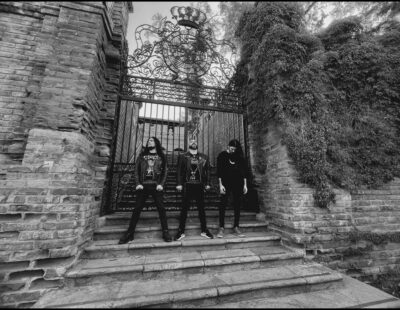We have two beer loves that are in direct contrast to each other: malty German brews and über-hoppy North American brews. These two things have nothing in common taste-wise. They are, of course, brewed with the same ingredients, but the ratios and the particular types of key ingredients used—such as hops, malt and yeast—are dramatically different. German beers, outside of some pilsners, don’t really accentuate aromatic hops much, despite the fact that many of the “noble hop” varieties like Hallertau, Spalter and Tettnang originated here. “Hoppy” beers like we’re used to in North America are not part of German brewing tradition. German beers tend to draw most of their flavors and aromas from the kinds of malt and yeast used. It was quite a revelation when we learned a few years ago that Brooklyn Brewing and Germany’s renowned hefeweizen brewer, Schneider, had teamed up and each brewed and bottled their own version of a hoppy weizenbock. They used the same methods to brew it, but used different hop varieties. Both beers were spectacular and unique, a true New World-Old World collab that virtually created a new style. The Brooklyn version is apparently no longer made, but the Schneider bottling should be readily available and it’s what’s on tap for this week’s Brewtal Truth column.
HOPFEN WEISSE
Weizenbock
Schneider-Brooklyner
Germany
8.2% ABV
According to the Schneider website, this was brewed with “Hallertauer and Saphir [a new breed similar to Hallertauer]” hops. These are not flashy Northwest-style hop varieties, yet in the amounts used to brew Hopfen Weisse, they do add a pleasant citrus fruitiness that complements the inherent spice and fruit character of the Bavarian yeast used to brew it. The first whiff of the big, rocky head head has some really interesting notes to it that are almost indescribable. There are medicinal flavors of cloves, hints of banana, bubblegum and booze, but mostly it’s just a basketful of fruit. Which is to say that it’s quite different than a typical weizenbock.
As you can see from the photo above, the beer is quite opaque, which is how a good hefeweizen or weizenbock should be. They are unfiltered and bottle conditioned (dosed with yeast) so that the yeast can carbonate the beer and add flavor. You want all that “meat” in your glass. Don’t fear the floaters; they’re not only good for you (B vitamins!), they give these kinds of beers the body and complexity that makes them so interesting.
By any measure, this is a big beer. Not one for slugging back on a patio on a sunny day. It’s 8.2% ABV, a little sweet, a little boozy and very full-bodied. Unlike most weizenbocks, though, the pronounced hops in here add a whole new dimension. First, of course, is the lingering bitter finish. Most German beers have a perceptible bitterness to them, but it’s usually just enough to take the edge off the sweetness of the malt. This clearly has a solid swack of hops in it. (At 40 IBUs it’s not in IPA territory as far as bitterness goes, but it’s substantially higher than the 17 IBUs you’ll find in Schneider’s hefeweizen.) The citrus notes are somewhat more subdued on the palate, but there definitely vinous/white wine notes of apple and pear lingering alongside some more earthy/grassy hop notes.
It’s a strange thing to drink a German-brewed beer that is not made “to style.” But, honestly, it’s kind of nice. Apparently there is a burgeoning craft beer scene in Germany now that is bucking the country’s adherence to tradition, tradition, tradition when it comes to brewing. Interesting new hop varieties are being developed and there’s some actual creativity happening. Maybe beers like this helped kick start that. Hopfen Weisse is a good example of the possibilities that await. Personally, we can’t wait to try a doppelbock dry-hopped with some bright and fruity hop variety.
Adem Tepedelen’s new craft beer book, Decibel Presents the Brewtal Truth Guide to Extreme Beers: An All-Excess Pass to Brewing’s Outer Limits, is now available in the Decibel online store.






